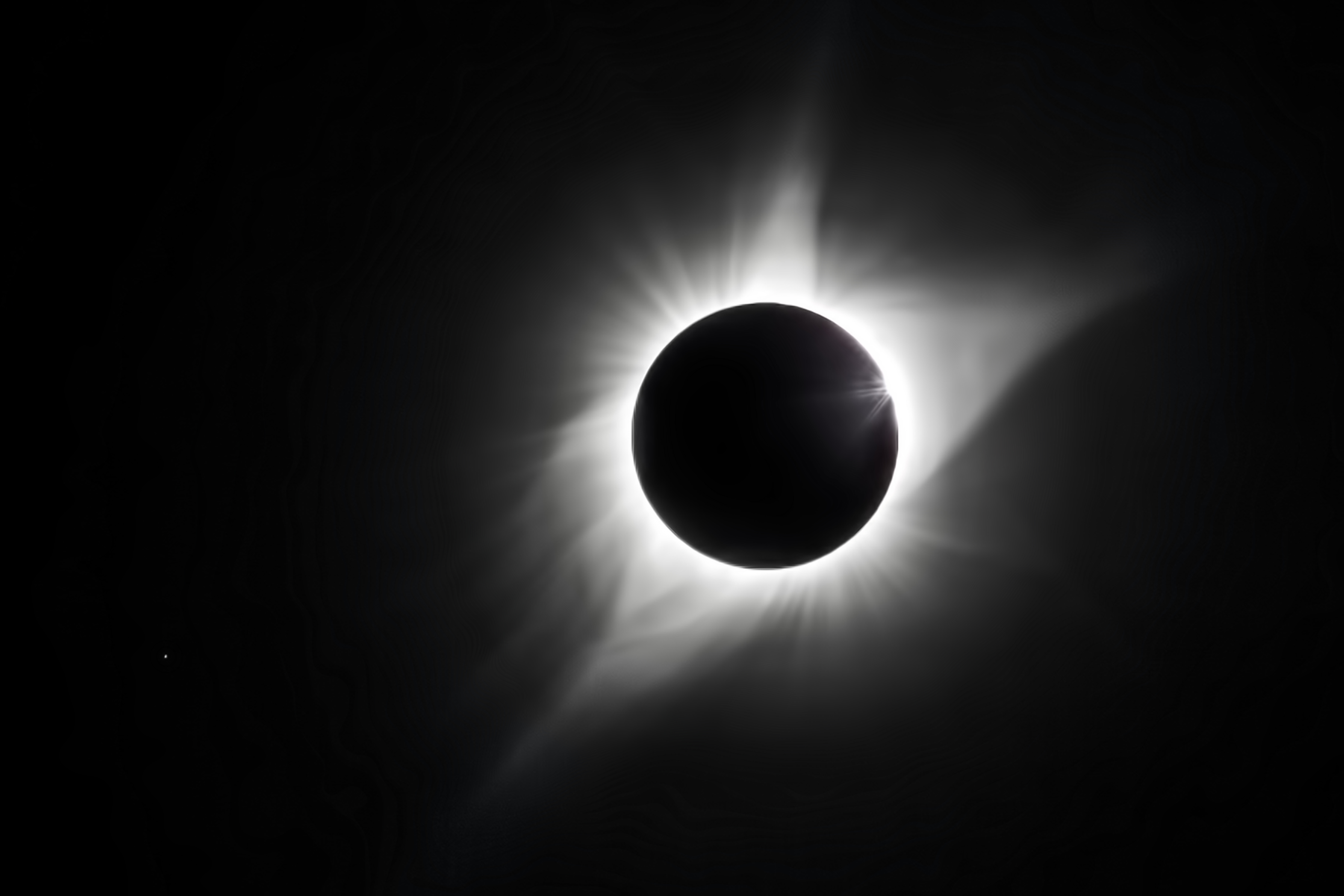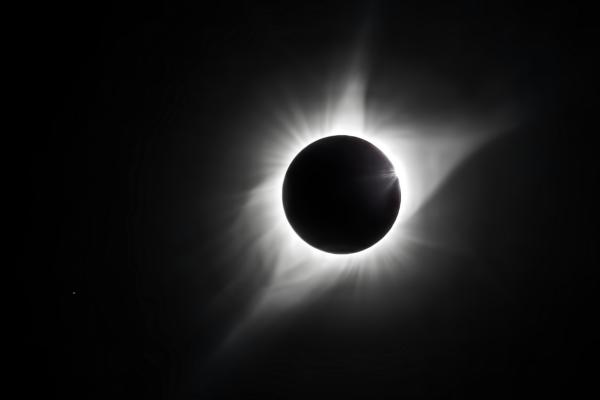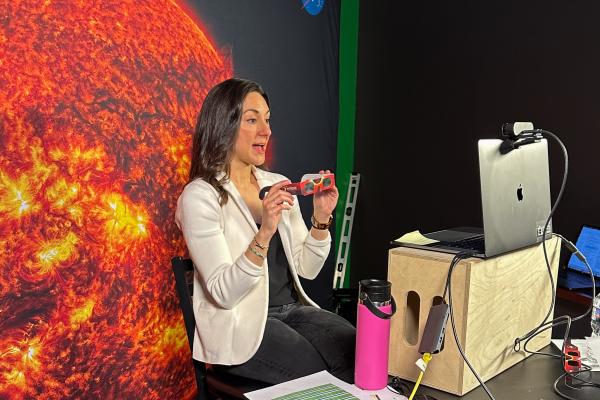KID REPORTERS’ NOTEBOOK
Eyes on the Sky


The people of ancient Greece believed that a solar eclipse was a sign that the gods were angry.
On April 8, people across the United States will witness a rare phenomenon: a total solar eclipse. Along the path of totality, which includes the cities of Dallas, Texas, Cleveland, Ohio, and Buffalo, New York, the Moon’s shadow will completely block out the Sun. In other areas, the Sun will be partially blocked.
A solar eclipse is the alignment of the Sun, the Moon, and the Earth. Eclipses occur two to three times per year. Total solar eclipses take place about every 18 months. But they are only visible from certain places on Earth. Many occur over the oceans or in other parts of the world. That means, the chances of seeing a total eclipse are extremely rare.
The last total eclipse in the United States took place in 2017, but it was only visible in a few cities. This year, people in nearly 500 cities in 13 states will get to witness this rare event. The eclipse will also be visible in parts of Mexico and Canada. As the Sun crosses the sky, each area will experience about a 4-minute period of total darkness.
I spoke with scientists at NASA about this unique phenomenon. “When the Moon’s shadow fully covers the Sun,” said Dr. Michael Kirk, a research scientist, “we’ll be able to see the solar corona.” The Sun’s corona is the outermost part of the Sun’s atmosphere. It’s usually hidden by the bright light of the sun, so an eclipse offers a good opportunity for scientists to study it.
Colonel Terry Virts, a retired astronaut, International Space Station Commander, and U.S. Air Force Colonel, has seen an eclipse from space. He notes that animals may react to total darkness by assuming that it has suddenly turned to night. “They don’t watch the news,” Virts said, "so they won’t know that there will be an eclipse.”

Dr. Gina DiBraccio of NASA holds a pair of protective eyeglasses to be worn when viewing an eclipse.
SAFETY FIRST
All of the NASA scientists stressed the importance of protecting one’s eyes during an eclipse. Wearing specially-designed glasses with a filter prevents eye damage.
Dr. Gina DiBraccio, deputy director of the Heliophysics Science Division at NASA’s Goddard Space Flight Center, said that it’s only safe to take off the protective glasses during totality. “You keep your glasses on when it’s a partial eclipse, but when it’s a total eclipse, it’s safe to take your glasses off,” DiBraccio said.
If an individual doesn’t have specially-designed glasses, Kirk, who is the principal investigator of NASA’s Heliophysics Education Activation Team, recommends making one’s own protective devices, using cereal or shoe boxes. NASA has instructions on its site.
There are other creative solutions. “You can use household items such as a colander, or anything that has small holes in it,” said James Tralie, a senior planetary science producer and animator at NASA.
Tralie said that there are ways to witness the eclipse even if you’re not in the path of totality. You can view the event online at the NASA website.
The next total solar eclipse visible from parts of the continental U.S. won’t take place until August 23, 2044. However, a total eclipse on March 30, 2033, will be visible in a remote part of Alaska.
